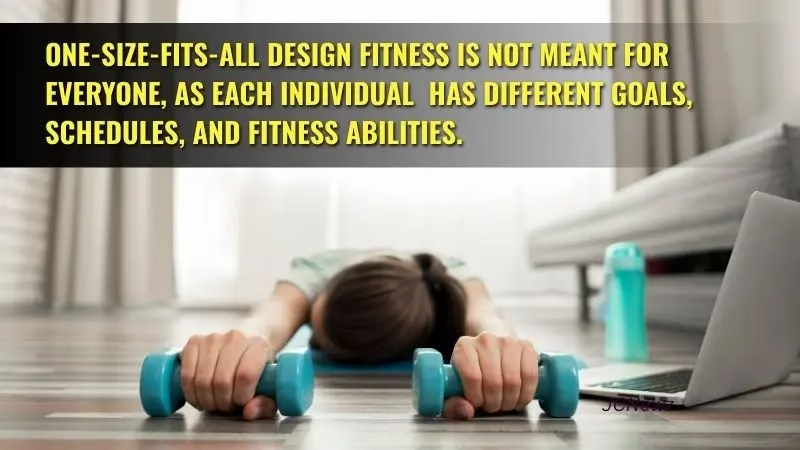Table of Contents
Companies in the United States are under growing demand to go above and beyond just provide fair salaries and benefits in today’s competitive corporate world. They should design better, more efficient, and interesting working spaces. Corporate fitness programs have thus evolved into a pillar of contemporary workplace wellness policies.
These initiatives aim to increase physical activity, lower stress, improve staff morale, and foster a healthier workplace culture. Although the advantages might be great, enacting and continuously participating in these projects presents problems of its own.
This manual examines the 7 biggest advantages and drawbacks of corporate fitness programs and provides you the practical steps needed to start one that really benefits you.
The Corporate Wellness Evolution in the U.S.
Dramatic alterations have occurred in the American workplace over the past two decades. Rising preventable diseases and mental health problems have resulted from sedentary jobs, long hours, and screen tiredness replacing physically active employment.
To fight against absenteeism, poor productivity, growing healthcare expenses, and deteriorating morale, businesses have started wellness programs—including exercise programs. Modern corporate fitness programs go beyond simple gym memberships. They include:
- On-site fitness facilities or virtual classes
- Fitness tracking apps and wearables
- Mental health support services
- Group workouts and wellness challenges
- Ergonomic interventions and more
Perks And Pitfalls Of Corporate Fitness Programs

✅ PERK 1: Enhanced Productivity and Focus
Employees’ energy, concentration, and cognitive performance significantly increase when they engage in consistent physical activity. Just 30 minutes of daily exercise can:
- Enhance memory retention
- Decrease weariness and mental stress.
- Increase problem-solving and creative capacity
- Raise the level of work satisfaction.
Many U. S. -based businesses say that workers who regularly take part in corporate fitness programs show improved performance and output.
Quick Tip:
Offer walking meetings, stretch breaks, or post-lunch workouts to naturally integrate movement into the day.
✅ PERK 2: Decreased Healthcare Costs
Employers are very worried about healthcare premiums as chronic diseases, including diabetes and hypertension, are growing. Corporate fitness initiatives promote better behavior, which can lower medical claims.
Important results of long-term fitness programs:
- Reduced body fat percentages and BMI
- Better blood pressure and cholesterol values
- Fewer medications and doctor’s visits
- Reduced requirement for sick days or temporary incapacity leave
The CDC estimates that every dollar invested on wellbeing results in roughly $3. 27 in healthcare savings and $2. 73 in decreased absenteeism.
✅ PERK 3: Better Workplace Culture and Morale
Fitness programs bring employees together in ways that work tasks often don’t. Team workouts, wellness challenges, and health goals promote social bonding, trust, and open communication.
Team Culture Benefits Include:
- Higher team cohesion
- Positive peer pressure toward healthy habits
- Better interpersonal relationships
- Increased employee happiness and belonging
Whether it’s a corporate 5K, lunchtime yoga, or steps competition, shared wellness goals build stronger, more collaborative teams.
✅ PERK 4: Higher Retention and Talent Attraction
When choosing a company to work for, the mental and physical health of Millennials and Gen Z employees are now emphasized. Good fitness programs can attract candidates who value work-life balance and retain top people.
Did You Know?
Glassdoor’s poll results showed that 79% of workers would prefer additional benefits over a salary hike. Health and wellness invariably top that list.
Operating Concepts:
- Offer gym reimbursement or ClassPass credit.
- Offer fitness-related PTO (e. g. , race day, mental health day)
- Highlight your wellness programs in job postings and on LinkedIn.
✅ PERK 5: Stronger Mental Health and Stress Relief
Exercise is very useful in treating depression, anxiety, and burnout. Regular physical activity regulates moods by elevating the serotonin and dopamine levels.
Corporate fitness programs that emphasize mindfulness, meditation, and physical outlets offer a well-rounded strategy to mental health care.
Top Mental Wellness Elements to Include:
- Breathing sessions and guided meditations
- Access to mental health apps like Headspace or Calm
- Virtual therapy support or EAP (Employee Assistance Programs)
- Quiet wellness rooms or decompression zones
When employees feel emotionally balanced, they work smarter, communicate better, and handle challenges with greater resilience.
❌ PITFALL 1: Low Participation Rates
One of the most common issues with corporate fitness programs is poor engagement. Reasons employees may not participate include:
- Feeling judged or insecure about fitness level
- Lack of time or flexibility in workday
- Unappealing activities or scheduling conflicts
- Lack of awareness or motivation
Solutions:
- Offer anonymous tracking or app-based programs
- Include low-impact, inclusive activities like chair yoga
- Gamify progress with team challenges and small rewards
- Use surveys to find out what employees actually want
❌ PITFALL 2: One-Size-Fits-All Design

Every workplace is diverse. From interns to senior leaders, remote staff to field workers—everyone has different goals, schedules, and fitness abilities.
Common Mistakes:
- Offering only gym-based programs
- Focusing on weight loss alone
- Ignoring cultural or age-related preferences
- Leaving out remote workers completely
How to Fix It:
- Provide a menu of fitness options
- Include mental health, nutritional, and sleep support
- Offer hybrid and asynchronous formats
- Make fitness part of a broader wellness ecosystem
❌ PITFALL 3: Lack of ROI Measurement
Companies often drop fitness programs when they can’t quantify the return. Yet wellness ROI often appears over months or years—not weeks.
What to Track:
- Participation rates (weekly/monthly)
- Sick days used before and after program launch
- Employee satisfaction surveys
- Insurance claim trends over 12–24 months
Use HR dashboards, anonymous tracking apps, or simple forms to measure your success.
Also Read: How to Lose Weight Fast & Safely in 2025: Complete Beginner’s Guide
Designing a Corporate Fitness Program That Works
Step 1: Needs and Preferences Assessment
Conduct an anonymous survey. Find out what activities they would prefer (weight training, dancing, walking, yoga), if they prefer morning or evening, and what barriers would keep them from participating.
Step 2: Establish Clear Goals
Goals might include reducing absenteeism, building morale, reducing insurance costs, or enhancing engagement. Fitness initiatives should be aligned with HR metrics that can be measured.
Step 3: Keep it Small
Begin your program on a pilot basis, one department, or one location. Determine the feedback received and outcomes gained from the pilot run and enhance accordingly before rolling out companywide.
Step 4: Choose the Right Tools
Use apps and platforms like:
- Gympass
- ClassPass Corporate
- Virgin Pulse
- Wellable
- MoveSpring
- MyFitnessPal Work Edition
Step 5: Celebrate Success
Recognize milestones like “Most Active Department” or “Top Wellness Ambassadors.” Feature success stories in internal newsletters to keep motivation high.
Also Read: 7 Powerful Weight Gain Shake Recipes for Hard Gainers That Actually Work
Best Fitness Program Ideas for Remote and Hybrid Teams

Remote employees often feel disconnected from corporate wellness efforts. Here’s how to include them:
- Virtual group classes via Zoom or YouTube
- Step count or hydration challenges tracked via app
- Fitness stipends for home equipment
- Wellness Slack channels for daily tips and check-ins
- Healthy recipe exchanges or cooking challenges
Inclusivity is key. Make remote team members feel like equal players.
Real-Life Examples: Companies Leading in Corporate Fitness
From fitness centers and massage therapists to nap pods and subsidized wellness classes, Google offers one of the most comprehensive wellness programs in the country.
Microsoft
Employees get access to gyms, meditation rooms, and group fitness events. Wellness benefits also extend to families and include mental health coaching.
Johnson & Johnson
Their Live for Life program includes biometric screenings, exercise planning, nutritional support, and coaching—resulting in long-term healthcare savings.
Salesforce
Known for its “B-Well Together” campaign, Salesforce combines emotional health, mindfulness, and physical activity into a scalable global initiative.
Long-Term ROI of Corporate Fitness Programs
Investing in fitness isn’t about immediate numbers—it’s about sustained employee health, satisfaction, and loyalty.
Over 3–5 years, companies report:
- 25–30% reduction in sick days
- Up to 60% improvement in employee retention
- 3:1 to 6:1 ROI from reduced claims and increased output
- Better Glassdoor ratings and recruitment outcomes
Also Read: How to Stay Fit: 7 Powerful Tips for Busy People to Stay Active Daily
Final Thoughts: Build Wellness Into the Foundation of Your Company

Corporate fitness programs are now a strategic move toward developing a more involved, resilient, and healthy workforce rather than an optional bonus. There are countless methods to include wellness into your culture whether your team is hybrid, remote, or totally in-office.
Begin humbly. Measure advancement. Be adaptable.
Most importantly, though, dedicate yourself to the long game.
Because a strong organization starts with fit people, and when your staff members flourish so does your company.

